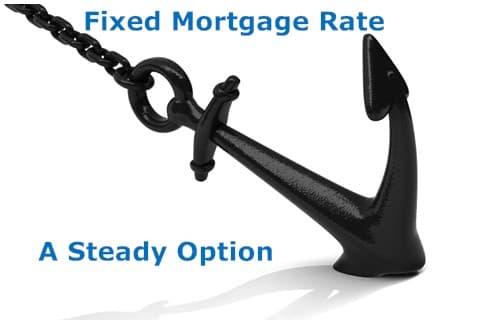Fixed Rate Mortgage: Less Risk
- Fixed mortgage rates mean less risk and stable payments.
- Historical low rates in 2012 makes the fixed mortgage rate more popular.
- Shop around for the lowest fixed mortgage rate.
Fixed Mortgage Rates - Sure and Stable Payments
A fixed rate mortgage (FRM) offers you sure and stable monthly payments. Mortgage loans are long-term commitments. Although you can find loans from 4-40 years, the most typical types are 30-year FRM and 15-year FRM.
Although an adjustable mortgage rate comes with a lower interest rate in the introductory period, it carries the risk of a higher rate in the future. With a fixed mortgage rate loan, you keep the same interest rate for the entire loan period, so you don’t have any surprises in your mortgage payment.
To understand which type of mortgage is best for you, learn about:
- Fixed mortgage rates - Comparing Payments
- Pro/Con of a fixed mortgage rate
- Shopping for a mortgage rate
Fixed Mortgage Rates - Comparing Payments
Your monthly payment is calculated based on the following factors:
- length of the loan
- type of interest rate
- type of payment plan.
The most common type of loan is the FRM, based on equal monthly payments. The principal and interest payments are divided so that your monthly payment remains constant. You pay your monthly interest based on your interest rate and balance at the beginning of the month. The principal amount is calculated by subtracting the interest part from your constant monthly payment.
Here is an example for a $200,000, 30-year FRM at 3.5% interest and a fixed monthly payment of $898.09:
| Payment # (month) | Interest Portion | Principal Portion |
|---|---|---|
| 1 | $583.33 | $314.76 |
| 180 | $367.96 | $530.13 |
| 360 | $2.61 | $895.45 |
Your interest portion represents a high portion of your payment. In the above example, your first payment is 65% interest and 35% principal. After 15 years, it becomes 41% interest and 59% principal.
The ratio will change based on your interest rate and the length of your loan. The table below shows the monthly payment and initial distribution for the first payment for a $250,000 FRM based on different loan periods and interest rates:
| Length years | Interest Rate | Monthly Payment | Interest | Principal | Interest portion of Payments |
|---|---|---|---|---|---|
| 30 | 3.5% | $1,122.61 | $729.17 | $393.45 | 65% |
| 15 | 3.5% | $1,178.21 | $729.17 | $1,058.04 | 41% |
| 30 | 3.5% | $1,122.61 | $729.17 | $393.45 | 65% |
| 30 | 5.75% | 1,458.93 | $1,197.92 | $261.02 | 82% |
| 15 | 3.00% | $1,726.45 | $625.00 | $1,101.45 | 36% |
| 15 | 5.25% | $2,009.69 | $1,093.75 | $915.94 | 54% |
The longer the term or, the less the interest rate, the less interest you will pay.
Pros and cons of a fixed mortgage rate
Interest rates fluctuate and have declined over the last several years, reaching new historical lows in June 2012. 30-year fixed rate mortgage hit 3.5%, and 15-year mortgage rates are under 3.0%. (Check with your lender the fees and points on your loan). This makes taking a fixed rate loan very attractive, and many borrowers, especially for refinance loans, are considering 15-year fixed loans.
The main advantage of a fixed rate mortgage is the stable payment. You can budget your payments without any surprises. From the beginning of the loan to the end, you know your monthly payment and the amount you will owe in the future.
The main disadvantage of a fixed mortgage rate is that it is higher than the initial rate for an ARM. You can take a 30-year, 7/1 ARM and lock your interest for the first 7 years. That means you are paying less interest and paying your loan off quicker for the same monthly payment. However, at the end of the 7 years, your interest rate will fluctuate, so make sure you can afford the adjusted payments.
In a low-interest market, the interest rate differential is small, so most borrowers prefer the fixed mortgage rate. When rates are higher, the adjustable rate mortgage is more popular, as borrowers hope to refinance into a lower rate fixed mortgage in the future. However, you carry the risk you will not qualify for a refinance due to a drop in your house value, income or credit score. Therefore, always weigh your options and ensure you can afford all the scheduled payments.
Getting a fixed mortgage rate loan
To get a fixed mortgage rate take the following steps:
1. Prepare your budget:
Keep and maintain your budget, so you know how much you earn and how much you spend. Your overall DTI shouldn’t be above 36% for a conventional loan and 43% for an FHA loan.
2. Shop around!
Mortgage rates, including fixed mortgage rates, fluctuate from lender to lender. It pays to shop around. Get a mortgage quote from a bills.com mortgage provider.
